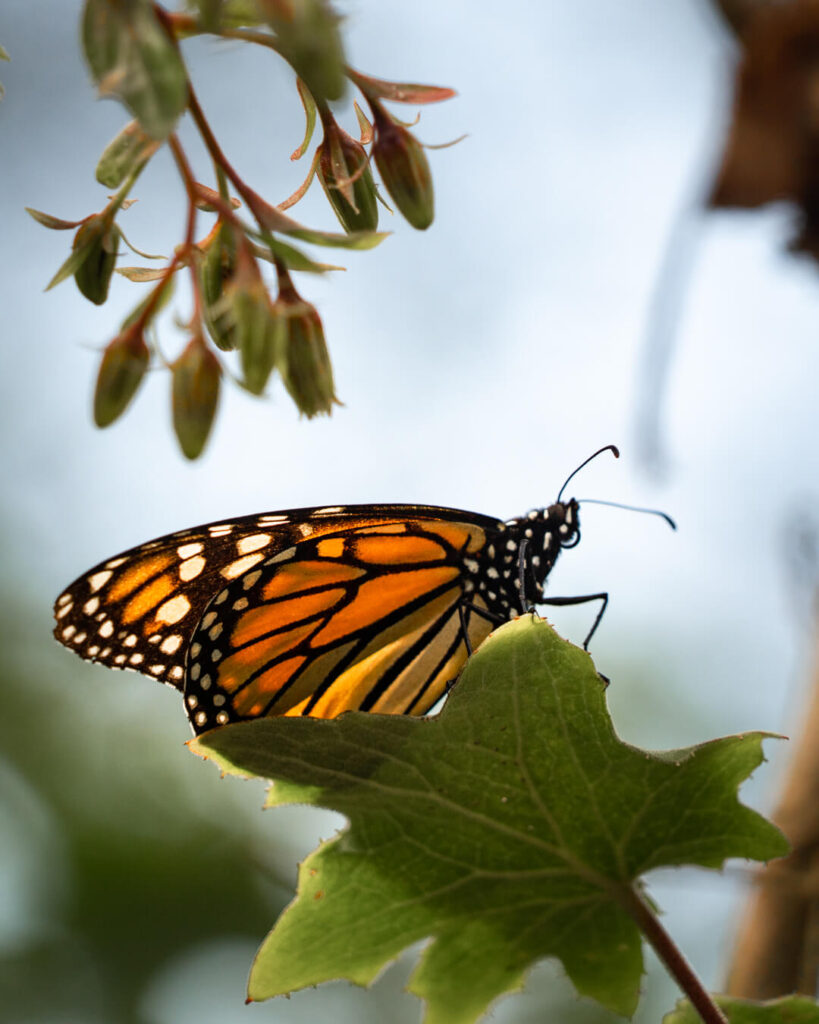
The monarch butterfly migration to Mexico is one of the most magical natural phenomena in the world. Each year, monarch butterflies migrate from the northern United States and southern Canada, flying 2,500 miles all the way to the mountains of central Mexico, where they spend the winter.
I’ve been lucky enough to experience the Mexico monarch butterfly migration two years in a row, seeing the air clouded with orange snow as millions of monarchs descend on their nesting spot for winter. It’s just incredible to imagine how these delicate creatures can travel thousands of miles and congregate in such huge numbers (often millions!) in high elivation mountains of central Mexico.
In this post, I’ll go over everything you need to know for a monarch butterfly trip to Mexico, including where and when to see the butterflies in Mexico. Plus I’ll share the Monarch Butterfly Biosphere Reserves in Michoacán state that we visited, where you can see the monarch butterflies.
The Monarch Butterfly Migration and Life Cycle
Not all monarch butterflies migrate to Mexico. It typically takes 3-4 generations of monarch butterflies before the “migration generation” migrate to Mexico to their overwintering sites.
The monarch butterfly has a 4-stage life cycle:
- Egg
- Larva (caterpillar)
- Pupa (chrysalis)
- Adult Butterfly
Adult monarch butterflies live 5-6 weeks, laying eggs on milkweed plants that hatch into caterpillars. These monarch butterfly caterpillars only eat milkweed, which is why the plant is essential to the species’ survival. After about 2 weeks, the caterpillar forms a chrysalis. After 10 days, an adult butterfly emerges from the chrysalis.
This process repeats 3-4 times during the summer while the monarch is in the northern USA and southern Canada. The last generation is the generation that migrates to Mexico in the fall.
This generation can live up to 9 months, allowing time to migrate and roost through the winter until spring. In spring, they start the long journey back to their North American sites, laying eggs on milkweed plants along the way. Once these butterflies are fully fledged, they also continue the journey north to start the cycle again.
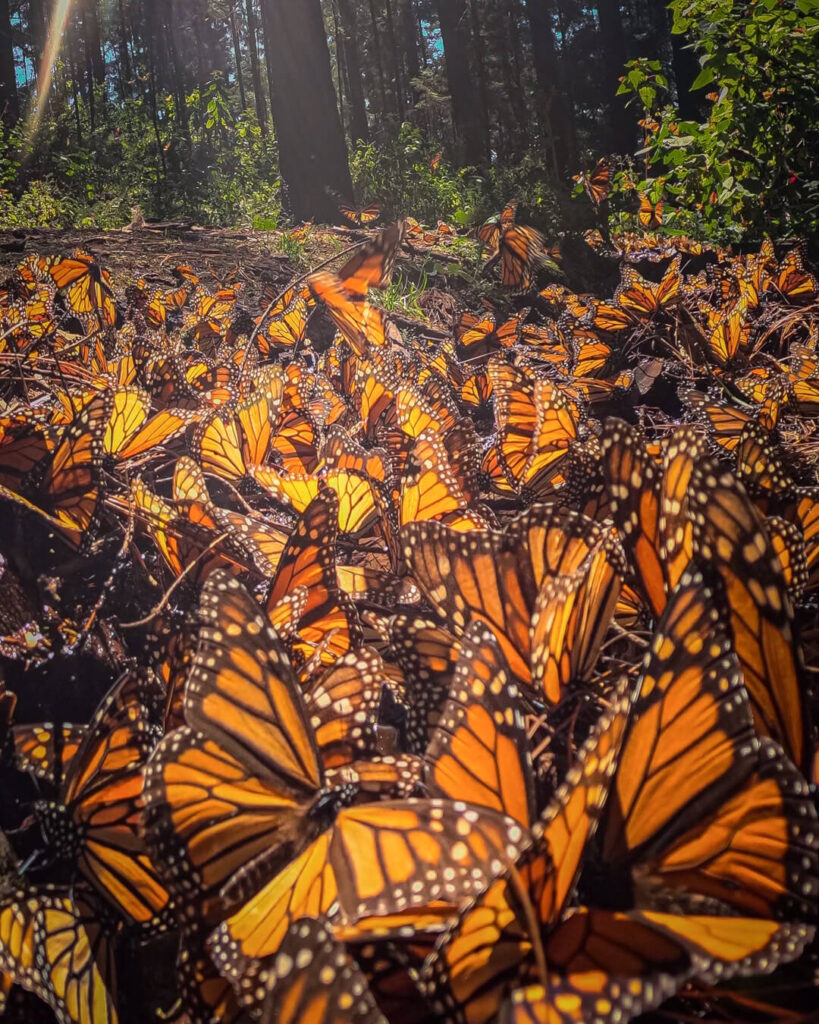
Where Do the Monarch Butterflies Migrate to in Mexico?
While some monarch butterflies are seen migrating to the West Coast of California or Texas, most butterflies migrate to the mountaintop forests of central Mexico in the state of Michoacán.
Here they are protected in the UNESCO World Heritage Site Monarch Butterfly Biosphere Reserve which is home to most of the east coast overwintering monarchs in Mexico.
The reserve is located in the Trans-Mexican Volcanic Belt. Here they congregate in huge numbers in the Oyamel fir trees within the Mexican forest region.
When do Monarch Butterflies Migrate, and How Long Do Monarch Butterflies Stay in Mexico?
Monarch butterflies leave the US and southern Canada in the fall to start their journey south.
Then the monarch butterflies arrive in Mexico in early November and usually stay until March before starting their spring migration back north.
When Can You See Monarch Butterflies in Mexico?
The best time to see monarch butterflies in Mexico is during the species’ migration peak, between December and February. This is when the number of butterflies will be at the highest and also most active.
What is the Best Month to See the Butterflies?
The sancuaries suggest visiting in January and February. We visited in January.
However, conditions can change based on unpredictable weather. We visited the reserve for a second day and it was too cold, so all the butterflies were huddled in the pine trees together, rather than flying around us as they had been the day before. If you have the flexibility, I would highly recommend planning your trip around the weather. The hotter the better!
Where is the Best Place to See Monarch Butterflies in Mexico?
The UNESCO World Heritage Biosphere Reserve is the best place to see the Mexico butterfly migration as this is where most of America’s east coast population is during their overwinter season.
How to Get to the Monarch Butterfly Reserves in Mexico
We rented a car from Mexico City and drove to the reserves. If you feel comfortable, this is by far the best option as it offers ultimate flexibility and we were able to return a second day to see more of the butterflies.
If you’d prefer not to rent a car. Two other options to consider are:
- Monarch butterfly tours from Mexico City by bus
- A taxi from Mexico City which takes around 2 hours
Options for tours to book to see the butterflies:
- Day trip from Mexico City to the Monarch Butterfly Sanctuary and Valle de Bravo
- Valle de Bravo to Piedra Herrada
- Day trip from Morelia to the Monarch Butterfly Biosphere Reserve
- Looking for a longer option? Here is a 7-day tour including several days with the monarch butterflies
What to Expect When You Visit the Monarch Butterfly Sanctuaries
I wanted to share some tips for visiting the Monarch Butterfly Biosphere Reserves because your experience can change based on:
- Weather conditions
- Time of day
- Crowds
- The gear you have
I highly suggest visiting during the week to avoid the crowded weekends. Early mornings and evenings are best to avoid crowds.
However the butterflies are most active when it’s warm, so if it’s a cooler day, you’re more likely to see them from 12-3 pm in the midday heat. If you visit on a cloudy, cooler day, you’ll see the butterflies nesting in the trees, rather than flitting around you.
The reserve is a protected natural habitat. That means some of the trails can get muddy and be steep in places. Make sure you’ve got proper footwear and prepare yourself as you would for going out on a hike.
Also, the higher altitude can get chilly!
It’s very likely you’ll have to hire a guide as part of your ticketed entry to the reserve due to it being a protected area. There are generally group guides and private guides available.
We did both and preferred the private guide experience. Hiring a private guide will be more expensive, but gives you much more flexibility. Don’t forget to budget for a tip for the local guides!
Keep in mind, that hiring a guide (even when you don’t “need” one) is the best way to help support local conservation efforts. Tourism money goes a long way to dissuade forestry practices that have lead to the destruction of large swaths of Monarch habitat. Please Travel Responsibly.
Book a day trip from Morelia with a guide here.
Despite the warnings of crowds, because you’re in a forested area and the main butterfly populations are generally roped off, you will have plenty of chances to get photos and videos of the butterflies without any crowds in your shot!
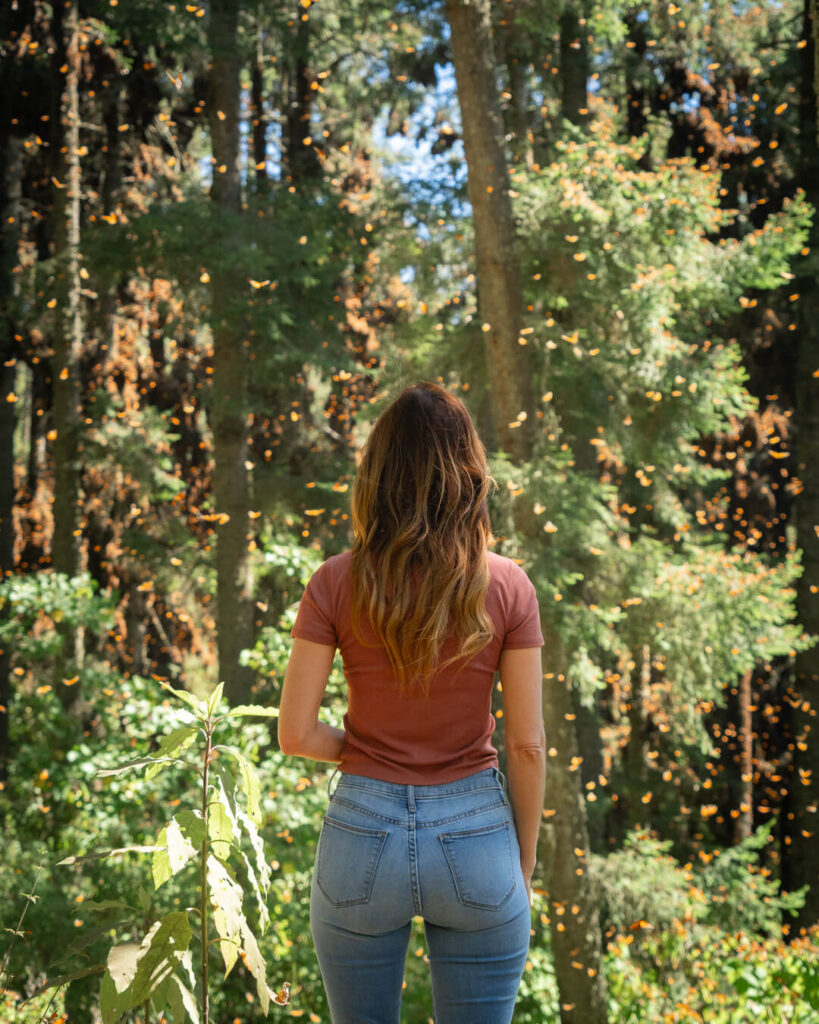
Where to Stay When Visiting the Monarch Migration
There are several towns and villages nearby The UNESCO World Heritage Biosphere Reserves, but the reserves are in rural areas. This means hotels and facilities are limited and booking ahead is essential to make sure you have your accommodation arranged.
Also, transport is in high demand during the migration season, so if you don’t have your own car, it’s worth checking if your hotel offers a transfer service to the reserve.
Angangueo
This is a beautiful town not far from the reserves which offers the biggest variety of accommodations from budget-friendly hostels to luxury hotels. There are also plenty of monarch butterfly biosphere reserve tours and transfer options here to the reserves.
Ocampo
Another town similar to Angangueo with charming colonial architecture and a range of accommodations. Also located fairly close to the reserve.
Zitácuaro
This is a popular option for visitors who are planning to spend longer in the region as it’s the biggest city in the area. However, it is about 1 hours drive from the reserve. Being the biggest nearby city, there are plenty of amenities, tours, and transfer options.
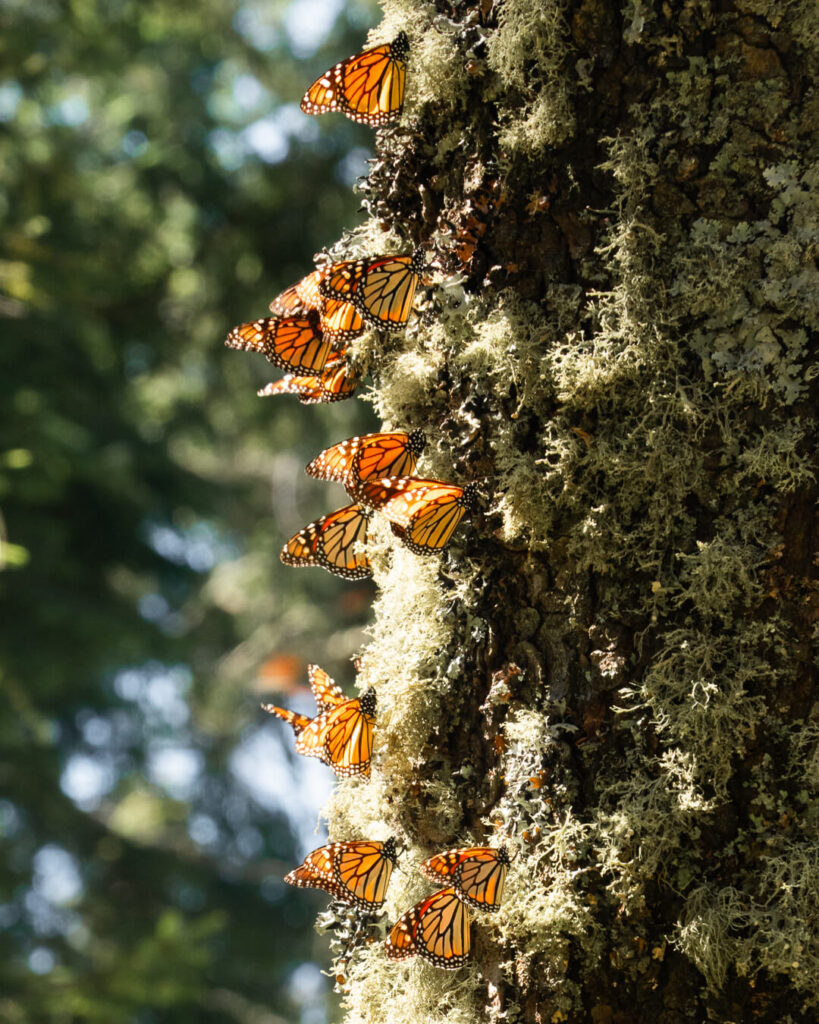
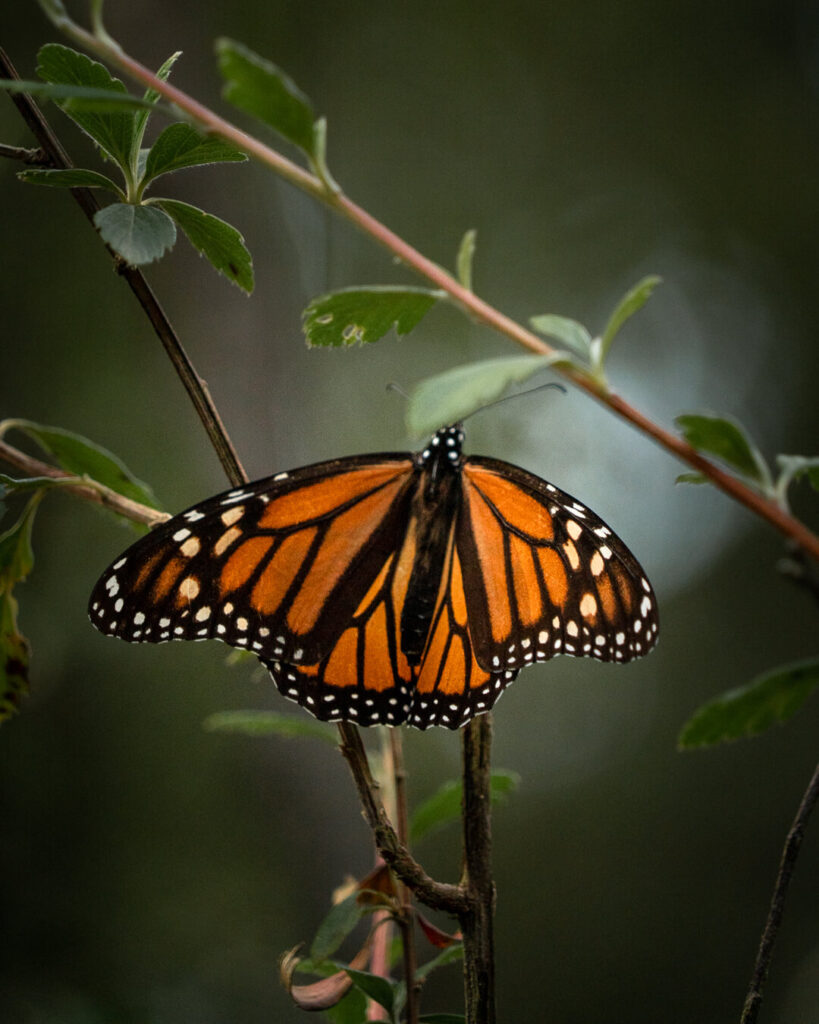
Which Monarch Butterfly Sanctuary to Visit in Mexico
Most of the colonies are in the reserve area, but there are several other locations outside the reserve area that we visited in our first year. Under the right conditions, the monarch butterflies outside the UNESCO World Heritage Reserve are just as spectacular. In fact, the year we visited Piedra Herrada there were so many butterflies on the road as we approached, we had to slow down so we didn’t hurt any!
It was literally like falling orange snow, so if you have time, I’d recommend visiting some of the areas outside the reserves just as much as the reserve itself!
Within the UNESCO World Heritage Monarch Butterfly Biosphere Reserve
Cerro Pelon Monarch Butterfly Sanctuary, Mexico
Located inside the Biosphere Reserve, Cerro Pelón is one of the most important overwintering sites for the monarch butterflies in Mexico. Cerro Pelón is located in the State of Mexico right over the border of Michoacan state.
It’s also the highest altitude sanctuary at 10,826 ft (3,300m), so make sure you’re allowing extra time to adjust!
The monarch butterflies typically arrive at the sanctuary in late October or early November and stay until March. During this time, they cluster together on the oyamel fir trees, forming dense colonies that cover the branches and trunks of the trees. The clustering provides them with warmth and protection from predators.
To get here, drive to Santiago de la Mariposa Monarca Macheros. Then it’s between a 5-6 km hike to get to the colony. Going by horseback is a popular option, and we chose to visit the butterflies this way.
In total it cost us 1260 pesos and 1400 with a tip ($67 USD) for the two of us.
El Rosario Butterfly Sanctuary, Mexico
El Rosario is definitely the most developed of all the butterfly reserves in Mexico, and it’s the most popular (and touristy) sanctuary, located near the town of Ocampo in the state of Michoacán.
All that being said, El Rosario was actually our favorite reserve because it had by far the most butterflies and the entire experience was simply mind blowing. So much so, that we actually chose to come back on to El Rosario on our last day over any of the others that we visited.
Tickets are 80 pesos, plus 300 pesos if you take a horseback ride. The elevation is similar to Cerro Pelón, around 9,800 ft. If you’re not acclimatized, the steep (but short) hike might be challenging.
Sierra Chincua Butterfly Sanctuary, Mexico
This is the best monarch butterfly sanctuary to visit if you’re staying in Angangueo as it’s the closest.
Unfortunately, we visited Sierra Chincua on a colder day that was windy too. As a result, the butterflies were all clustered in the trees and the experience was not as good. If you visit on a sunny, warm day, that would likely not be the case.
Which Sanctuary in the UNESCO Biosphere is the Best?
All of the Sanctuaries are special in their own way. However, if I only had time to visit one, I would go with El Rosario Butterfly Sanctuary. Even though it is arguably the most developed/toursity, we had our best Monarch Butterfly encounters there.
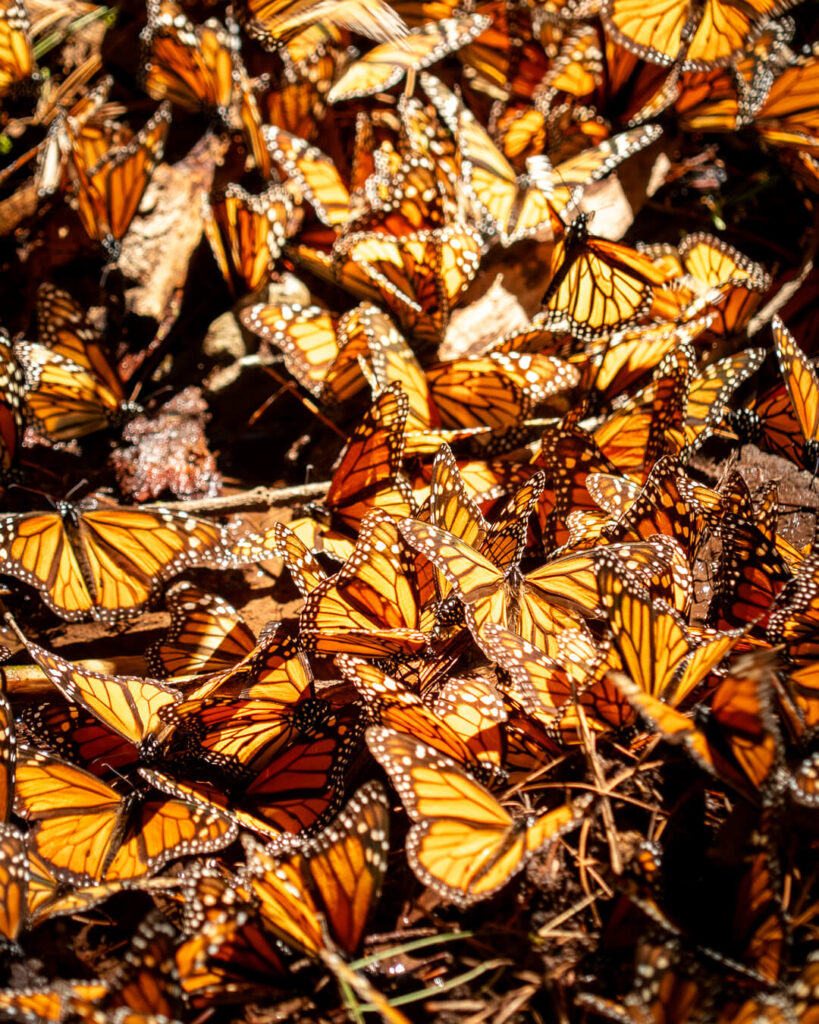
Outside the UNESCO Biosphere Reserve
Piedra Herrada Monarch Butterfly Sanctuary, Mexico
All of the sanctuaries we visited during this year’s annual migration were located in the UNESCO World Heritage Monarch Butterfly Biosphere Reserve. During the previous year, we visited Sanctuary de la Mariposa Monarca Piedra Herrada which is located in Mexico State.
On our first day at Piedra Herrada we paid for a private tour which was definitely worth it because we went back a second day and did a group tour that felt very rushed. Plus, it was much more difficult to get videos and photos when we weren’t allowed to stray at all from the group.
The hike here is about one hour uphill. There are horses but we opted to walk up to the monarch populations each day.
This is probably the easiest monarch sanctuary in Mexico to reach from Mexico City. You can book a day trip from Mexico City to see it here.
Where to Stay to Visit Piedra Herrada
My favorite thing about visiting Piedra Herrada is actually the nearby town that we based ourselves in. Venture about two hours west from the bustling heart of Mexico City, and you’ll stumble upon the picturesque village of Valle de Bravo.
This lovely haven seamlessly blends chic allure with old world charm. Nestled along the shores of Lake Avándaro, the village exudes an air of sophistication along its primary shopping avenue. Here, you’ll find trendy coffee shops, high-end furniture boutiques, and art. Yet, Valle de Bravo gracefully clings to an antiquated charm, showcased through its cobblestone-laden thoroughfares and colonial edifices.
Piedra Herrada monarch butterfly sanctuary is located approximately 30km away from Valle de Bravo, which is the perfect location for an overnight stay. . . or two, or three.
Book a tour of Piedra Herrada from Valle de Bravo here or a day trip from Mexico City here.
We stayed at Las Luciernagas which is a fantastic Airbnb a bit out of town that I would highly suggest if you’d like to splurge a little. It’s especially nice if you have your own transportation to explore the area. Otehrwise, I have no doubt that there are plenty of fun accommodation options located in Valle de Bravo.
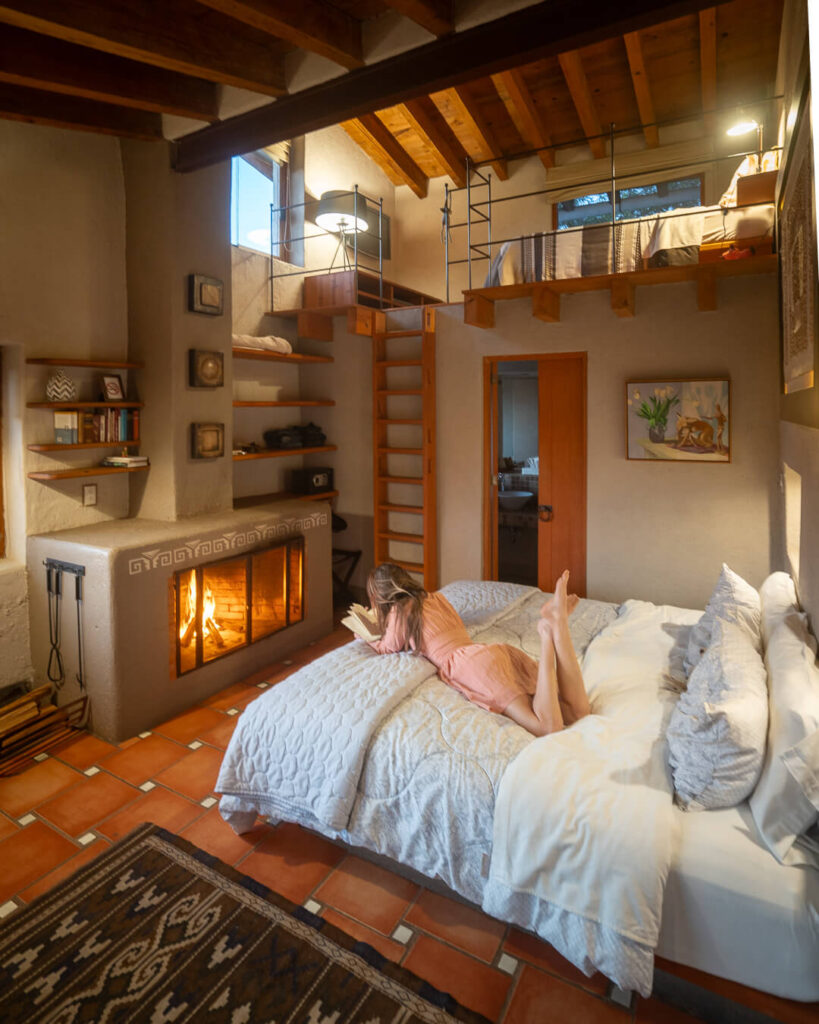
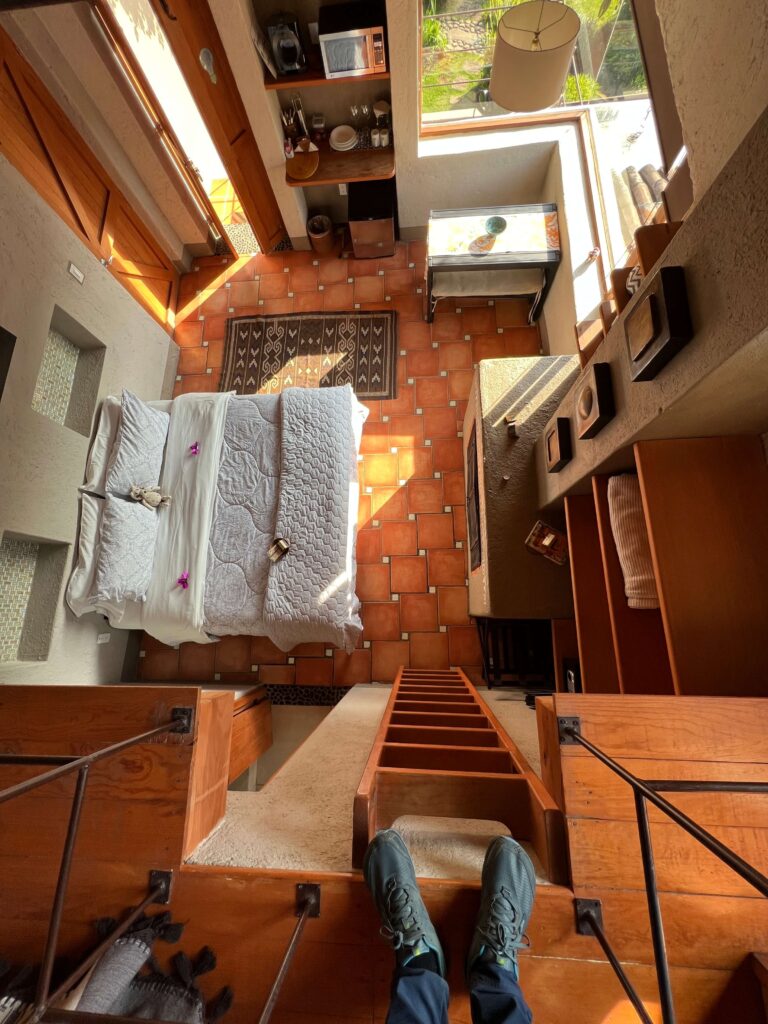
Monarch Butterfly Conservation
In 2022, monarch butterflies were officially designated as endangered. Unfortunately, they have a drastically declining population due to severe weather and climate change, human impact, landscape development, and pesticides.
While the eastern monarch migration has seen less of a decline, the western monarch population (on the western side of the Rocky Mountains) has declined over 90% in their annual butterfly count.
The sanctuaries in Mexico are doing great conservation and awareness work. Other organizations like the National Wildlife Federation, World Wildlife Fund, and Butterfly Conservation Organization are taking steps to restore nature, reduce herbicide use, restore loss of tree cover, and protect habitats for the butterflies.
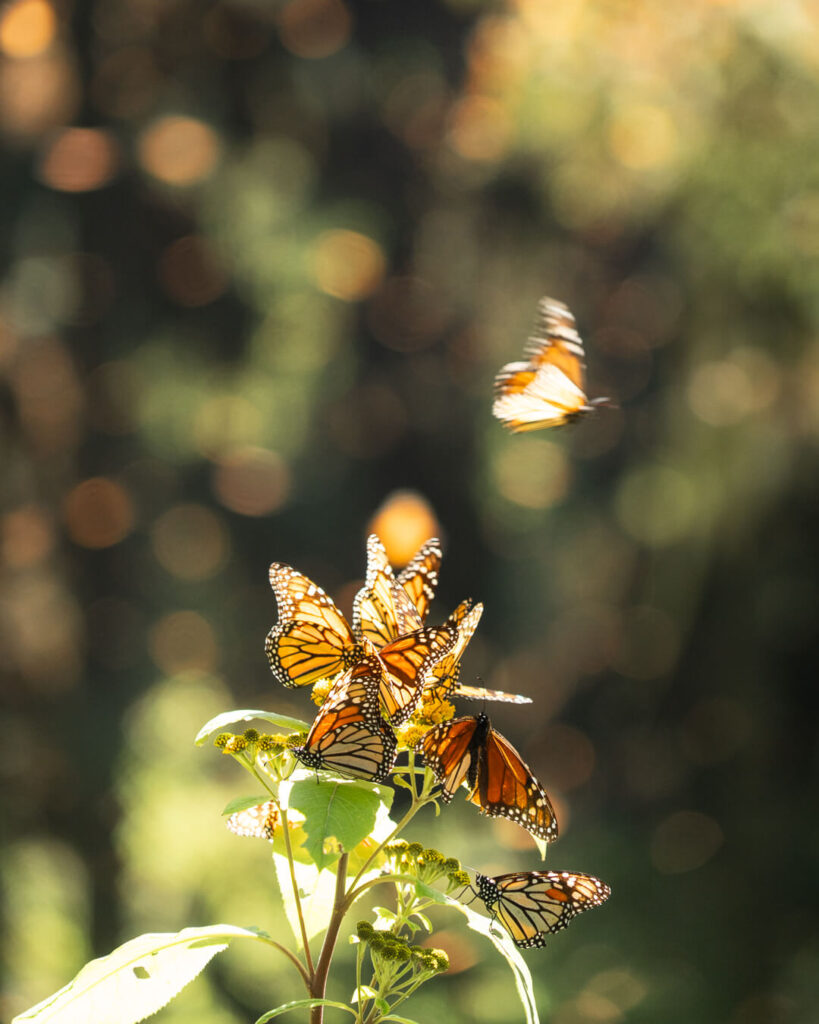
The loss of habitat has also meant a loss of breeding grounds – exasperating the butterflies declining population. Deforestation is not the only habitat loss threatening the monarchs. The loss of the Milkweed plants is a huge factor. Milkweed is essential for the butterflies to lay their eggs and for the caterpillar to feed on once it’s hatched.
Organizations are working to restore and protect more monarch habitats and monarch butterfly overwintering sites. But they’re also encouraging people to plant more milkweed in their gardens to enable monarch butterfly breeding and population growth.
Together we can all play a part in helping to ensure the survival of monarchs. It’s my hope that through conservation efforts, and public support, we can enjoy the magic of the Mexico monarch migration for years to come.
Ready to plan your trip? Here are some tours to consider!
More Posts You Might Enjoy!
Exploring Waterfalls In La Huasteca Potosina, Mexico
Exploring Cenotes in Mexico’s Yucatan Peninsula
Nine Beautiful Places You Have To Visit In Peru
Like this post? Pin it for later and share it with others!
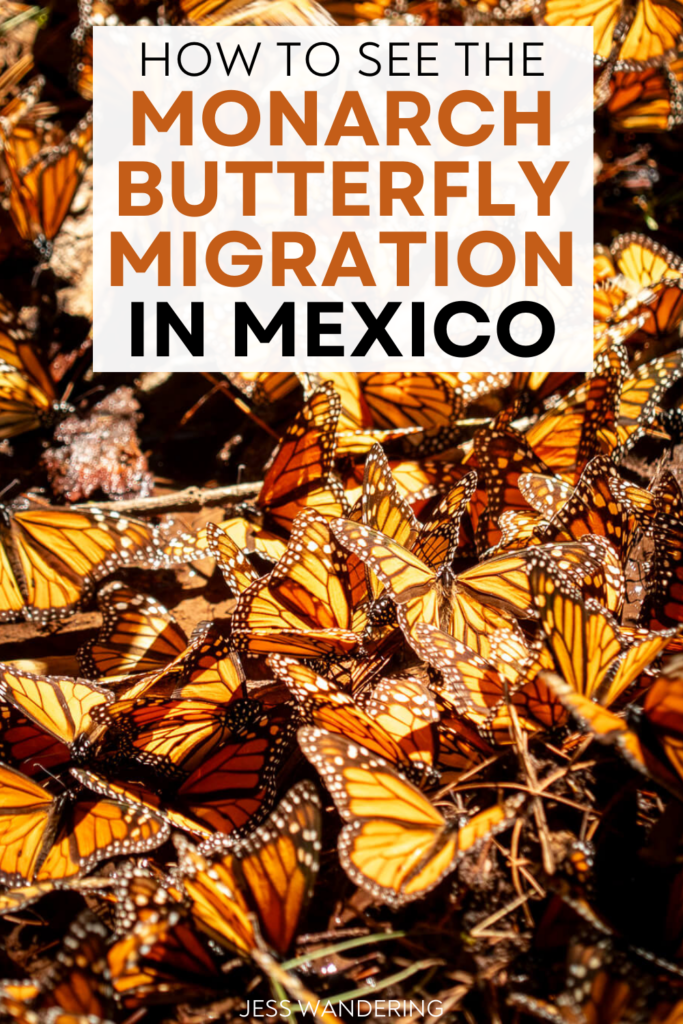

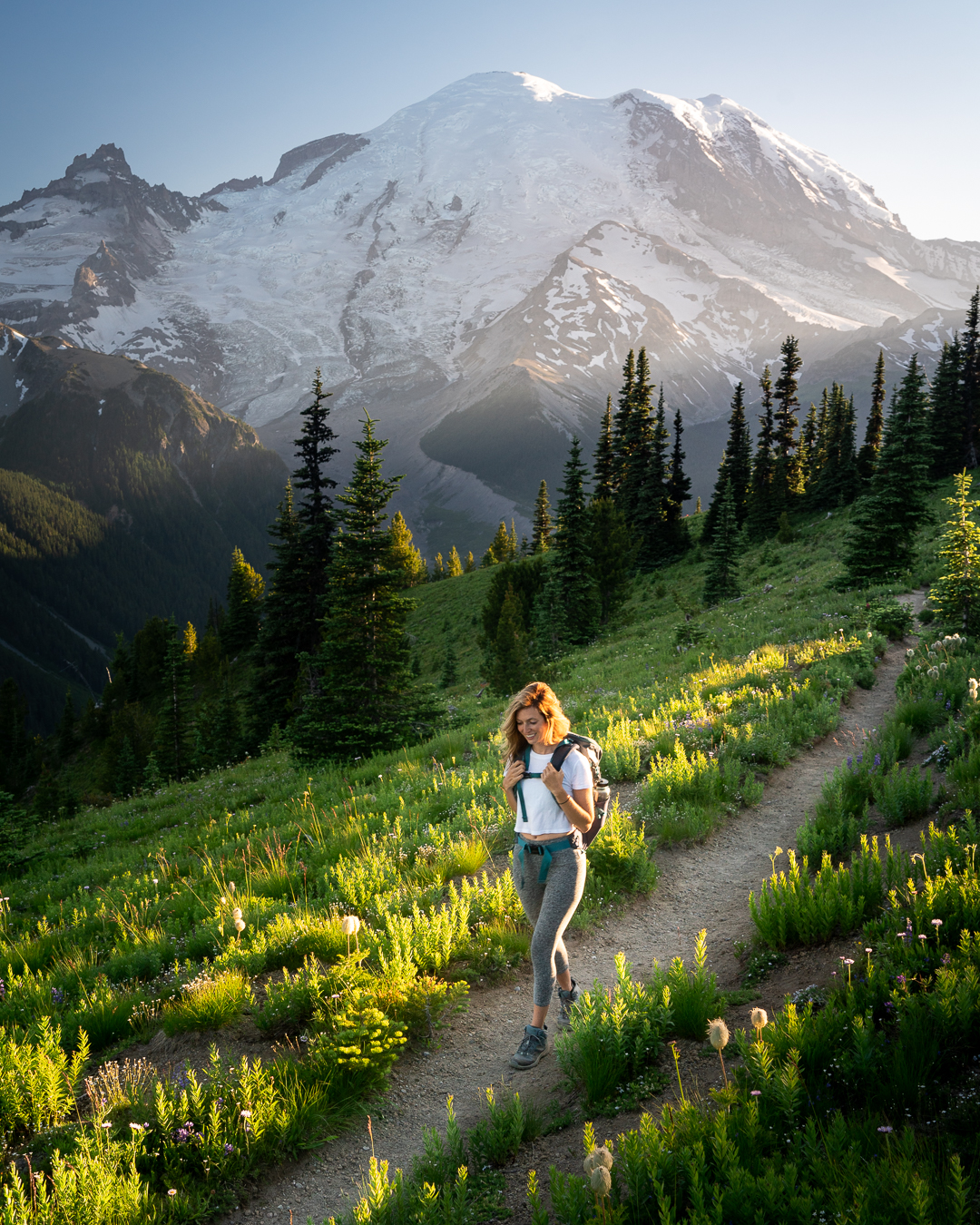
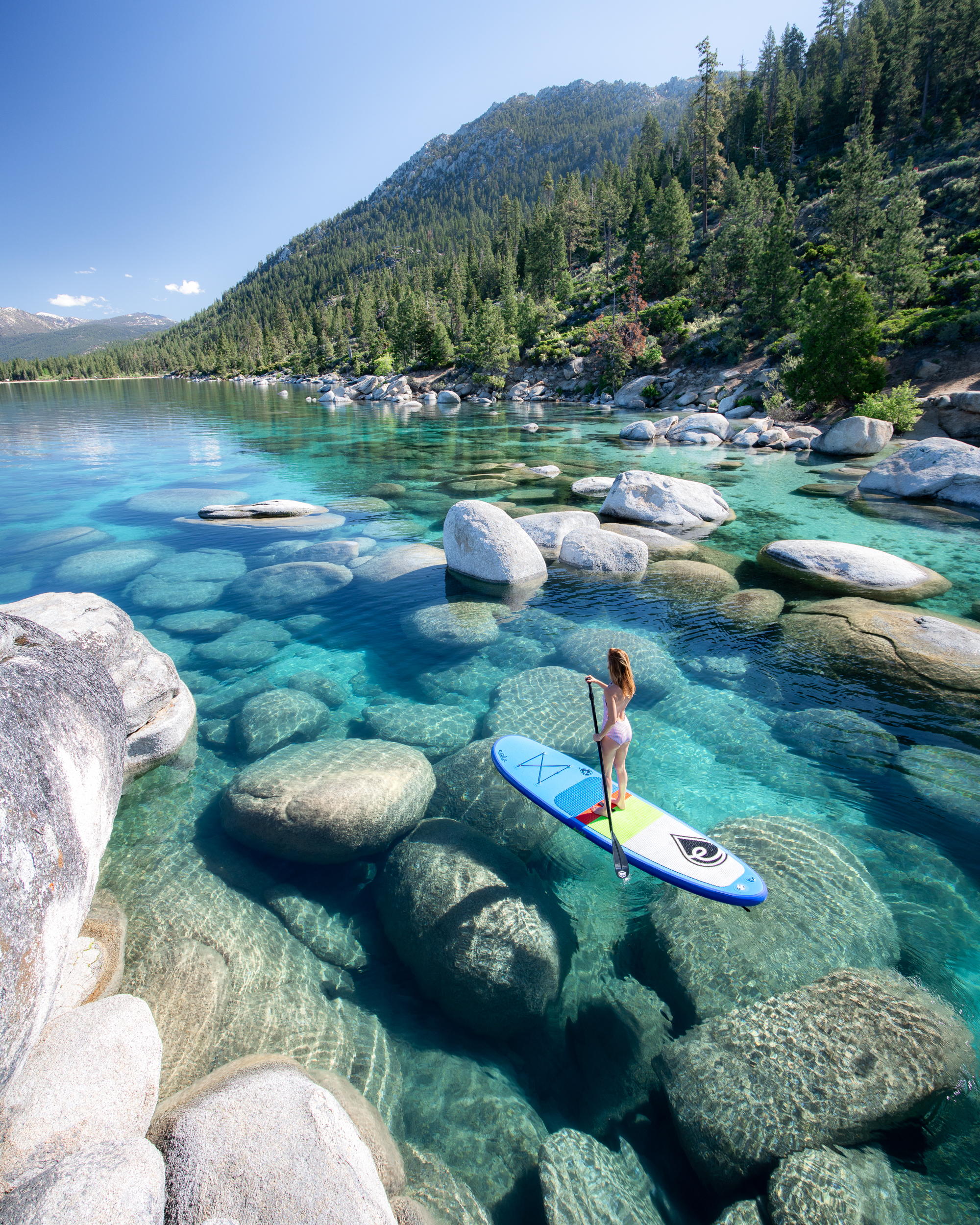
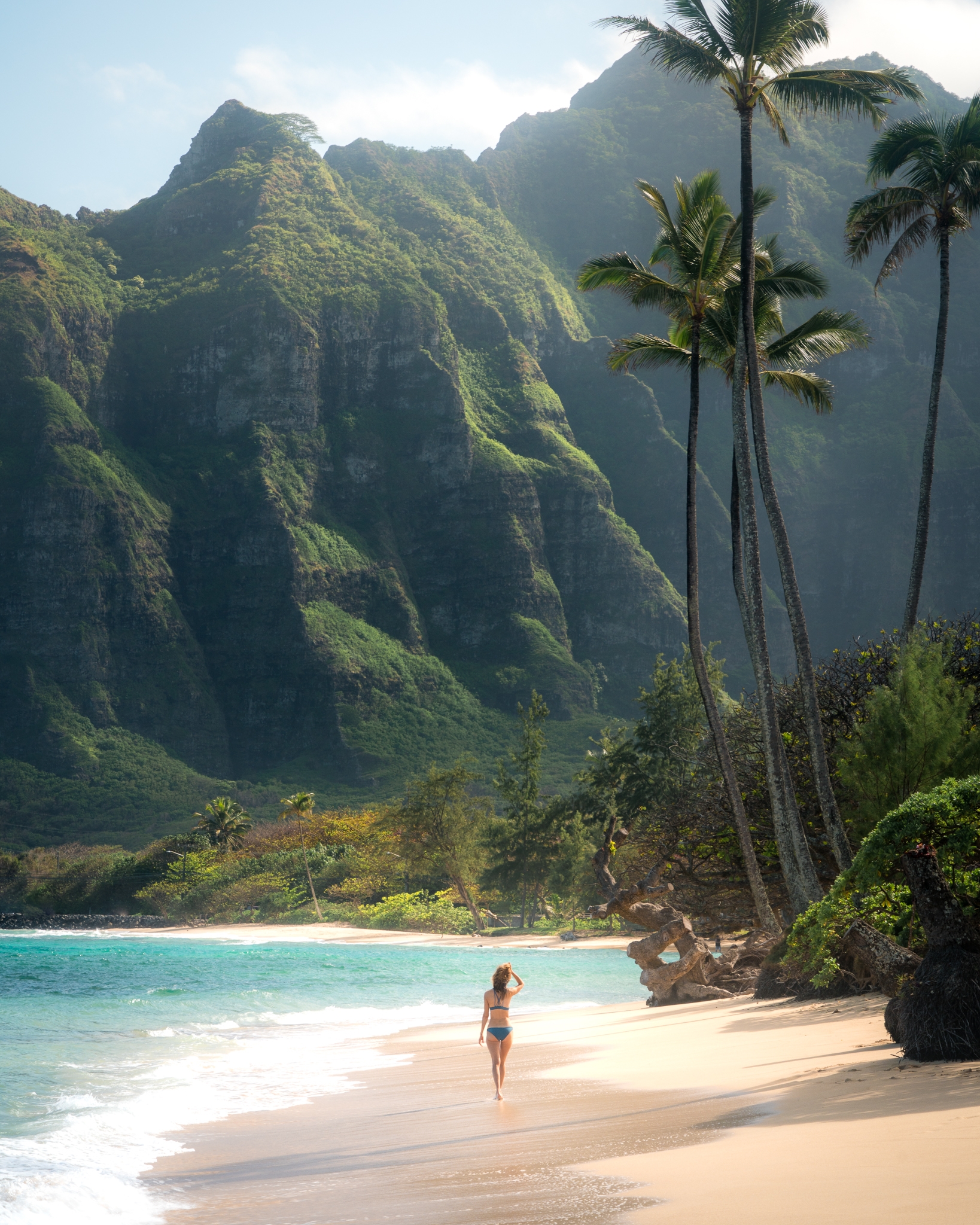
This is such a dream! I recently went to the monarch preserve in Monterey for the first time and was totally floored by the experience even though the peak migration season had already passed. Seeing them again is definitely a new bucketlist for me!
If you enjoyed your experience in Monterey I really hope you are able to see the migration during peak season. There’s nothing like it!